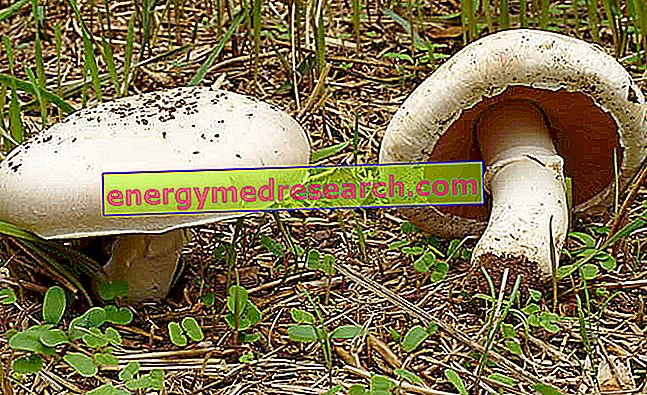Edited by Dr. Francesca Fanolla
Now present as market products available in various flavors, colors, various brands, etc., hydrosaline drinks have become rather "fashionable" among the regular and occasional gyms, casual sportsmen and even people who use them as the water, Coca Cola or beer ...
But not everyone knows that these drinks, certainly much "healthier" than the aforementioned Coca-Cola and alcoholic beer, have specific characteristics and relative to the purpose for which they were invented and produced.
Before talking about them, I make a premise on SWEAT, which is closely related to the use of salt and water supplements in aerobic activities or which, in any case, cause abundant sweating.

The concentration of electrolytes in sweat varies with the rate of secretion of the sweat glands. As the speed of glandular secretion increases, the concentration of sodium (Na) and chlorine (Cl) in sweat also increases, while the concentration of magnesium (Mg) and potassium (K) tends to decrease. Sodium and chlorine are therefore the two electrolytes that are lost the most after sweating.
During physical activity the practitioners must aim at replenishing water and mineral salts lost through a calibrated supply of different elements. This reintegration becomes absolutely necessary when the water loss with sweating reaches 2.5 / 3 liters, a threshold that can be easily reached in endurance sports. For example, during races like the marathon, the amount of sweat produced can reach 4/6 liters, equal to 10-15% of the total body water.
However, the average water loss was calculated at 1.25 l / h of activity but the water supply to prevent dehydration is about 0.5 l / h of activity.
Sweat is an HYPO-EMOTIONAL LIQUID, which is a lower body fluid from OSMOLARITY (concentration of particles present in solution, or solutes) lower than that of all other body fluids; in fact the sweat has a concentration of 80-180 mOsm / l compared to 290-300 mOsm / l of the plasma.
Sweating therefore always leads to a loss of water in excess of the loss of salts.
If the intake of WATER does not increase in step with the loss of sweat the hydrosaline balance is called NEGATIVE. The consequence is a reduction in the volume of body fluids and in the amount of sodium in the body, associated with an increase in the concentration of osmotically active solutes (osmolality).
It is therefore wrong to use HYDROSALINE DRINKS during an activity that does not involve excessive sweat loss (such as the weight room or a low intensity aerobics class).
The rational reintegration of water and salts is represented by beverages that are less concentrated than plasma (hypotonic), which therefore are closer to the osmolarity of sweat. Therefore using a hypotonic drink does not alter the physiological mechanism of sweating.
Therefore, it is always advisable to increase the water supply when you have intense sweating. In particular, the intake of fluids before and during muscular work reduces and delays the appearance of dehydration and its consequences.
In any case, the reintegration of the water lost at the end of the year is indispensable.
Conversely, the reintegration of salts is appropriate, in general ONLY if sweat losses are very important (such as during a spinning lesson, a cross-country run, high-intensity aerobic fitness or cardio fitness classes). In this case, in fact, the amount of salts lost by the organism can amount to many grams, resulting equal to or greater than the daily intake.
It is important to point out that in calculating the concentration (osmolar load) of any liquid, sugars are also important. In commercially available beverages the contained sugars represent the greatest osmolar load, clearly higher than that of salts. This fact can present two negative aspects:
- slow gastric emptying, causing a delay in the actual absorption of the drink.
- cause a recall of water from the blood to the intestinal lumen, obtaining the opposite effect to that desired, since the blood will concentrate further.
If the plasma is too concentrated with respect to sweat, fluid retention occurs instead of a physiological loss in sweat with a consequent decrease in heat loss (hyperthermia).
The impoverishment of the body's hydrosaline reserves and energy supplies, during prolonged physical exercise, is the main consequence of the progressive decline in athletic performance and possible damage from hyperthermia (heat stroke).
It is therefore advisable, during and after intense physical exercise, to consume an adequate quantity of liquids, taking into account the following warnings:
Reinstatement must be based on the actual loss of liquids. It must therefore be customized to the climatic conditions.
Reintegration should preferably take place after physical exertion. In all those endurance sports in which physical exertion exceeds 60 minutes of duration, reintegration can also occur during, possibly in fractionated administrations.
The reintegration will be favored by the intake of fresh drinks (10-15 °) which are able to contribute to the control of hyperthermia and to accelerate gastric emptying.
The best reintegration is obtained by taking beverages with a low concentration of salts and dissolved sugars (hypotonic) since, as we have seen, sweat is hypotonic compared to plasma.
What are the saline reintegrators:
Hypertonic supplements: these are beverages whose concentration, consisting of carbohydrates and mineral salts, determines an osmotic pressure, that is an attraction of liquids, higher than that of plasma. They require very long assimilation times in the intestine.
Isotonic supplements: these are beverages whose concentration determines an osmotic pressure equal to that of the plasma. They require average times of assimilation at the intestinal level.
Hypotonic supplements: these are beverages whose concentration determines an osmotic pressure lower than that of plasma. They are the drinks that absolutely require the shortest assimilation time in the intestine.




